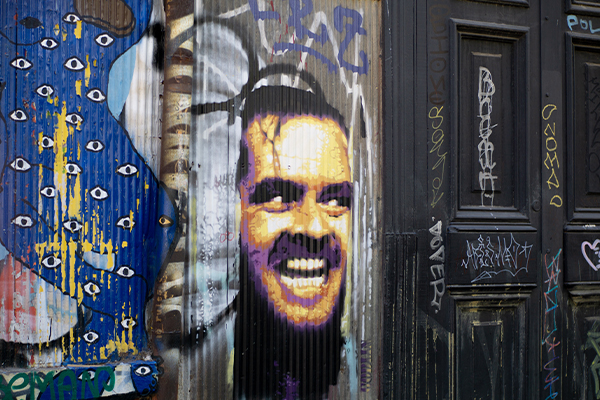Just as Linda Williams wrote in her “Film bodies, Gender, Genre and Excess”, most of the films that will push our body to excess are the ones that make us involuntarily mimic the emotion that showed on the screen. For me, horror movies especially affect me on the psycho-physical level. Here I use the example of the famous “Here’s Johnny” scene from The Shining to explain.
Directed by prestigious filmmaker Stanley Kubrick, The Shining is probably one of the most classic horror films in the film history. The excellent performance of Jack Nicholson and Shelley Duvall, as well as the great use of background music and sound effects, make the film psycho-physically “gross”.
Williams said in her paper that in horror film, there’s always the element of violence and terror. In The Shining, we can directly see the violence of the husband Jack on one side of the door and the fear of the wife Wendy on the other. In the movie, we see Jack with his large, sharp axe, chopping the door over and over again. The director smartly put a close-up of the axe, so that the audience can see how the door violently damaged by the axe. The repetition of the extreme violent act, which makes me, and probably other audience immediately feel afraid.
On the other hand, we also see Wendy’s fear and desperate through her exaggerated facial expression, with both her eyes and mouth widely open. Shelley Duvall here vividly shows a poor female victim, who is in danger of being killed by her husband. This strong contrast of emotion posts the “sadism” of a “saturated woman” in front me, and immediately evokes my psycho perversion of the scene. Moreover, the scene of Jack peeking into the door, saying “here’s Johnny” pushing the fear to the climax. The “male gaze” here is thoroughly showed, as we can see from Jack’s evil predator’s expression in eyes.
Apart from the act, the background music and sound effects help to create the horror atmosphere and thus stimulate the audience’s involuntarily mimicry of the fear of the female in the film. During the scene, the Polymorphia is played. This is not the first time the music appears in the background. It actually first appears when Wendy discovers Jack’s weird writings. The fear already starts from that moment. It reflects Wendy’s shattered emotion and serves as a cue for latter fears by Wendy. Therefore, when I heard the music, with violins skittering at a high pitch, I involuntarily start to shatter as Wendy in the film. Moreover, the background music is mixed with Wendy’s long loud stream as well as the repetitive sound of the axe hitting the door. The cluster of the sound adds up the horror atmosphere, and also presents the fear and violence through sound to the audience.

